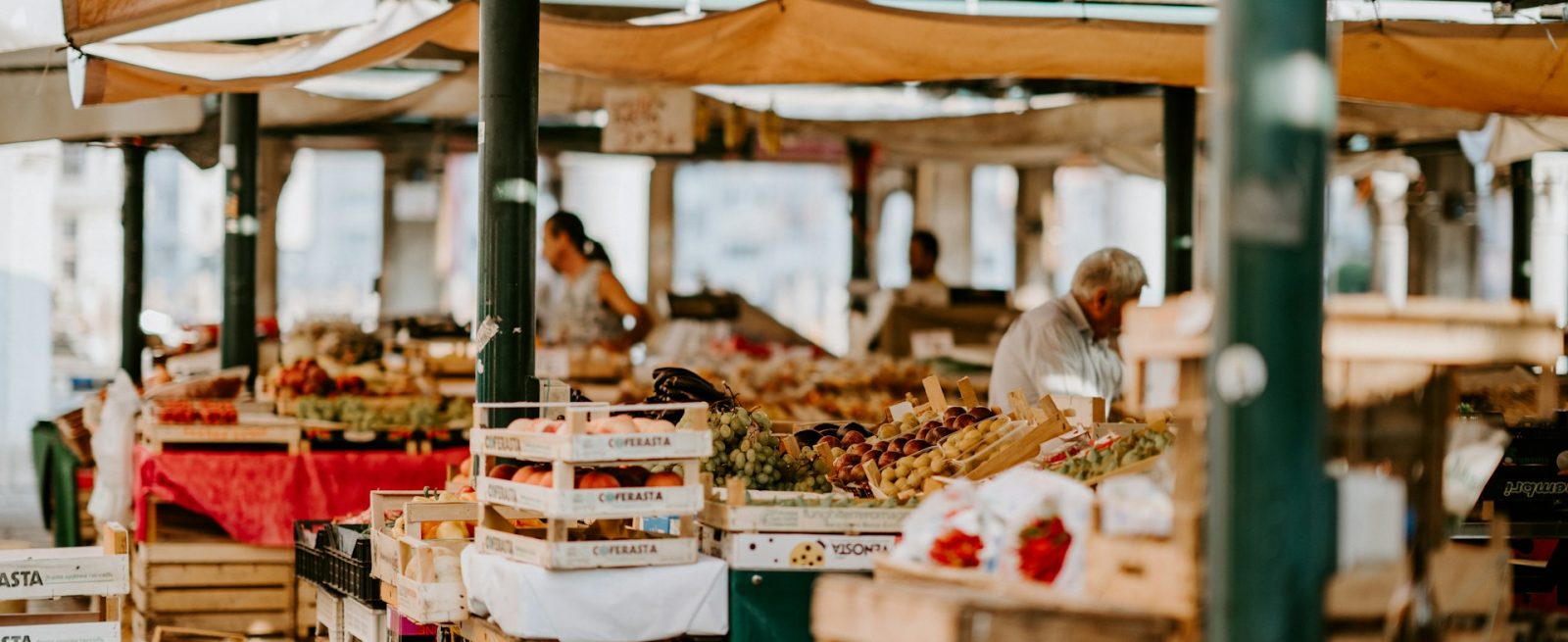Embracing Hyperlocal Ingredients: Transforming Menus and Communities
5 Min Read By Joy Pouros
Buying locally has been trending for quite a few years for several reasons. People have become increasingly aware of climate change and the importance of ethical sourcing. Consumers want to support their communities, and do so by attending and buying from family owned businesses, art fairs, and local brands. Their desire to shop local has extended to farmers markets and the food industry. They are aware that some parts of the food industry have unsavory processes and practices; consumers like knowing what’s in their food and where it is coming from. Some restaurants are expanding on this trend by using hyperlocal ingredients.
What is hyperlocal? Hyperlocal means most or all ingredients are grown or raised by the restaurant itself. What they cannot produce themselves, they source locally. The result is a unique culinary experience that features unmatched freshness and innovative and educational menus, with a strong emphasis on sustainability.
Sustainability and the Local Economy
Sustainability is a trend in its own right, but it is also a perfect counterpart to hyperlocal ingredients, which have fewer packaging, storing, and transportation needs. The global economy allows people to eat food out of season and irregardless of its origin, but that comes at a cost. Much of the food typically available at restaurants and grocery storeshas a large carbon footprint. Its carbon footprint depends on how far it has traveled, how long it has been stored, and other variables. Transportation alone accounts for nearly 20 percent of food-system emissions.
The modern supply chain is an impressive feat, but it has its weaknesses. Disruptions in the supply chain can happen suddenly and wreak havoc on the foodservice industry. Hyperlocal ingredients reduce emissions while also creating a more resilient supply chain for restaurants.
Food waste is another concern regarding sustainability in restaurants. By producing the food themselves, restaurants have new options available to them to control food waste. They can easily compost, without having to find partners or programs to take the compost. They also plan their menus around what was planted and what will be harvested soon, allowing them to use as much of their bounty as possible. As for excess? They can sell it or can it for the off season.
The food isn’t the only thing that stays local – so does the money. When a restaurant buys from a large supplier, the money they spend goes to companies around the country, or even the world. When diners come to eat, a fraction of their bill goes to pay the local employees, but much of the money leaves the community. In a hyperlocal restaurant, the money stays in the local community, promoting economic resilience within that community.
Establishing a Community
It’s not feasible for most restaurants to truly produce all of their ingredients. Meat, in particular, requires substantial land and expertise that a restaurant owner or chef does not necessarily have. In these cases, restaurants committed to hyperlocal principles partner with local farms to provide what they can’t. Instead of both chefs and farmers relying on large conglomerates for their livelihood, they support each other, fostering strong community relationships that benefit both businesses – and diners.
Using hyperlocal ingredients builds trust with the community. Consumers increasingly want transparency from businesses, including food transparency, and what can be more transparent than being able to say all the ingredients were grown locally? Restaurants don’t have to stop at food – tables, chairs, and decor can all be sourced from local artisans as well, to complement the restaurant’s local theme.
The hyperlocal concept lends itself well to community educational programs about gardening, nutrition, and the global supply chain involved in the food industry. Menu notes, garden tours, and farm-to-table events can educate diners about where food comes from. By growing the food themselves, restaurants have many options for community events. These events can be educational, but they also add to the dining experience.
Health and the Culinary Experience
Experiential dining is popular amongst all age groups, but particularly the younger demographics that would prefer to spend money on experiences than things. It’s more than a mere preference, studies show experiences make consumers happier. The unique aspect to hyperlocal ingredients adds to the overall experience of going out to eat. It isn’t just the novelty that makes hyperlocal a better experience; the food is at its freshest and tastiest.
Seasoned gardeners have long known that the produce at the grocery store doesn’t taste as good as what’s grown in their backyard. That’s not pride talking. Commercial produce has been bred for its looks and ability to ship, and is often harvested before it’s ripe in order for it to make it to its final destination before it spoils. The result gives millions of people access to produce in a convenient grocery store, but it loses some of its taste – and its nutrients.
Eating seasonally provides the most nutrients, and it’s best for the environment. Before supply chains were as robust as they are today, consumers were more in tune with what was in or out of season. Now, many consumers are unfamiliar with the concept, as they can get most produce at their nearby grocery store year-round. It’s an opportunity to learn more about what grows locally, and to taste the positive difference eating seasonally has on dishes.
Using hyperlocal ingredients requires the menu to change seasonally. Furthermore, chefs and diners alike may be surprised both by what grows locally that is edible, and what common fruits and vegetables can’t be grown locally. Cocoa plants can only grow in a few select areas in the United States, making chocolate out of reach for restaurants striving to be hyperlocal, but other flavors come from plants commonly considered weeds. The end result is an innovative menu with less common flavors and combinations.
Challenges and Opportunities
While there are many benefits to hyperlocal ingredients, it is not without its challenges. Getting started requires capital upfront for additional land, equipment, and manpower to source its own ingredients. That’s not accounting for the additional knowledge required to grow or raise everything a restaurant desires to have as an ingredient. Growing various types of produce, raising poultry and livestock, and beekeeping all require specific expertise.
Many restaurants account for those knowledge gaps and lack of capital by partnering with local farms, but it is still undeniably more legwork than finding suppliers and placing orders. HoQ is one example of a restaurant partnering with over a dozen local farms and producers to achieve a menu that is 90 percent local.
Some restaurants use innovative techniques to increase their sustainability. Croc’s 19th Street Bistro uses a solar hot water system, rain barrel and garden, and on-premise chef garden. High tech solutions like vertical farming or aquaponics maximize space and can produce a wider variety of ingredients year-round. Additionally, forming cooperatives with other local businesses can help share the burden of costs and expertise.
Once it is up and running, restaurants using hyperlocal ingredients are subject to the seasonal success of their crops, which are affected by pests, local weather, and other variables outside their control. Innovative menus are a culinary benefit of hyperlocal ingredients, but at times it's a daunting challenge, restricted by the self-imposed sourcing commitments and promises to the community.
Hyperlocal can save money, in the sense that supply chain costs are built into the prices of typically sourced foods. However, whether operations actually save money overall after covering the additional costs of growing or raising the ingredients themselves depends on many factors and is not guaranteed. All that said, it’s a noble pursuit that many find worthwhile.
The Impact of Hyperlocal Ingredients
Due to the nature of locality, each hyperlocal restaurant is unique to its community. Different climates and landscapes lend themselves to different produce and protein options. The beauty of the concept is it encourages appreciation for what your community has to offer, right in its own backyard. Places from Albuquerque, New Mexico to Virginia Beach, Virginia, and everywhere in between can participate.
By growing their own produce and partnering with local farms, hyperlocal restaurants reduce their carbon footprint, support the local economy, and foster strong community ties. This approach not only enhances sustainability but also provides diners with fresher, more flavorful food that is rich in nutrients. As consumers increasingly seek transparency and sustainability in their food choices, hyperlocal restaurants stand out for their ethical practices and environmental responsibility, offering a unique and compelling culinary experience.


